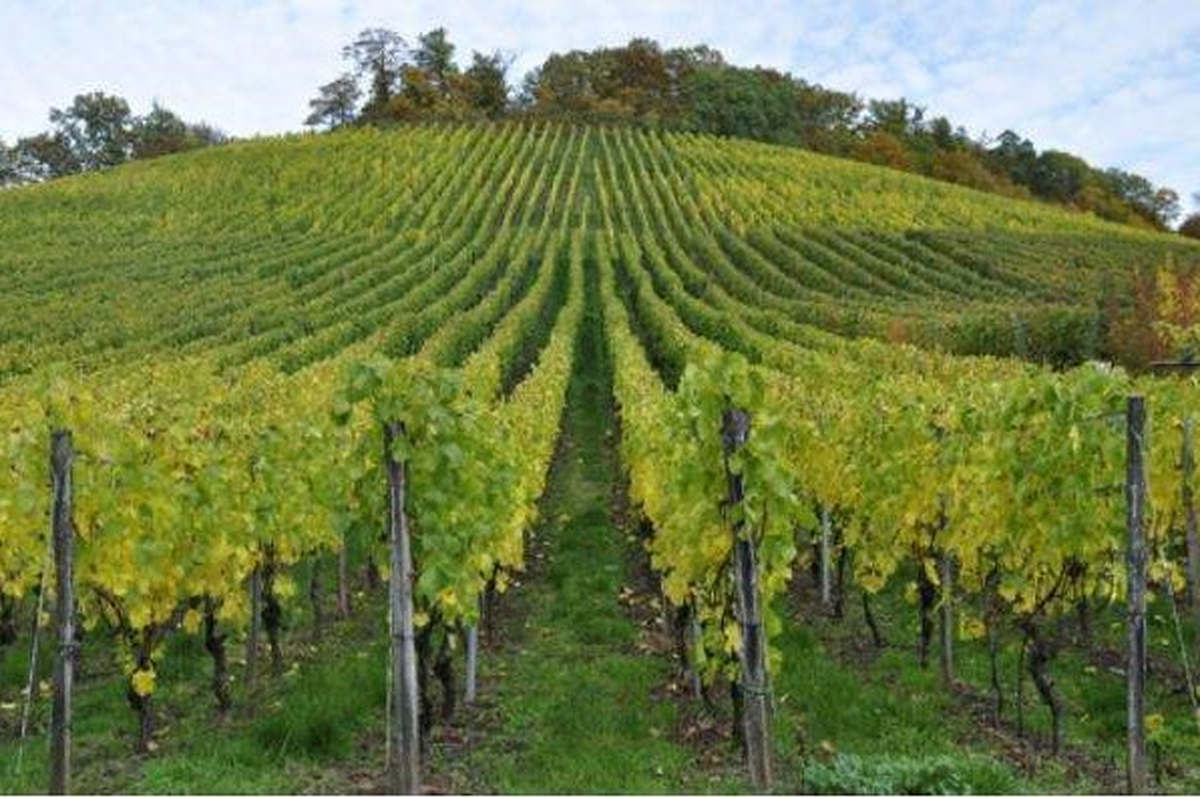In 2021, the volume of world wine production is expected to be extremely low, at a level similar to that of 2017. France ranks third behind Italy and Spain.
- Low production volumes are expected in the EU, especially in Italy, Spain and France, which together have lost about 22 Mio hl compared to 2020 due to late spring frost and overall unfavorable weather conditions.
- The only major EU wine-producing countries with higher harvests than 2020 are Germany, Portugal, Romania and Hungary.
- First-harvest forecasts for the United States suggest production volumes slightly above 2020.
- A very positive year for vineyards in the Southern Hemisphere where relatively favorable weather conditions have led to record production levels in South American countries, South Africa and Australia, with New Zealand being the only exception.
World production
Based on information collected from 28 countries, which account for 85% of world production in 2020, world wine production in 2021 (excluding juice and must) is estimated to be between 247.1 and 253.5 Mio hl, with an average forecast of 250.3 Mio hl.
The 2021 wine production can be considered extremely low, barely above the historically low production of 2017. This year’s expected volume appears to be 4% lower than 2020 (which was already below average) and is 7% below its 20-year average. This is the result of unfavorable weather conditions that have severely affected Europe’s major wine producing countries this year.
The Southern Hemisphere and the United States seem to be exceptions to this overall negative scenario and tend to balance out the decrease in volume observed in the EU. Indeed, world wine production is below average for the third consecutive year. However, the impact of this decline for the global wine sector needs to be assessed in the current context where the COVID-19 pandemic still generates a relatively high degree of volatility and uncertainty.
Northern Hemisphere
European Union
In 2021, weather conditions have not been favorable for grape producers in the European Union (EU) and wine production is estimated at 145 million hl (excluding juice and must). This volume shows an annual decrease of 21 million hl (-13%) compared to 2020.
Overall, preliminary estimates of 2021 wine production for EU countries reveal a rather heterogeneous situation, mainly due to different weather conditions throughout the year.
The year 2021 proved unfavorable for wine production in the three largest EU producing countries – Italy, Spain and France, which together account for 45% of world production and 79% of EU wine production – mainly due to late frosts in early April.
Italy, still in the lead with 44.5 million hl, is forecasting a 9% drop in wine production in 2021 compared to 2020 as well as to its average for the last five years.
Spain is the world’s second largest wine producer in 2021, with production forecast at 35.0 million hl. However, this level is expected to be 14% lower than in 2020 and 9% lower than its five-year average.
France has suffered most from the effects of a disastrous vintage with heavy frosts in April, followed by summer rains, hail storms and episodes of mildew. As a result, it is forecasting a production level of 34.2 million hl, down 27% from 2020.
Other EU countries with negative results compared to 2020 are Austria (2.3 Mio hl, -4%/2020) and Greece (1.7 Mio hl, -26%/2020). On the other hand, Croatia is expected to record about 0.7 million hl, with a 13% decrease compared to 2020. Slovenia (0.5 Mio hl, -26%/2020) and Slovakia (0.3 Mio hl, -2%/2020) also seem to join the group of countries that have experienced a decrease in their wine production level.
Positive growth for some
On the other hand, several EU countries are forecasting positive growth compared to last year. This is the case of Germany, the fourth largest European wine producer, with an estimated production volume of 8.8 million hl (+4%/2020), despite the late frost episode that strongly affected some of its neighbors.
Portugal, with 6.5 Mio hl, should record a wine production volume slightly higher than its 2020 level (+1%).
Another major producer, Romania, whose harvests have been subject to very high volatility in recent years, is forecasting a surge in wine production in 2021, with 5.3 million hl (+37%/2020), a level 29% above its last five-year average.
Hungary’s wine production is estimated at 3.1 Mio hl in 2021, a level 6% higher than in 2020 and 4% higher than its five-year average.
Bulgaria has a production level of 0.9 million hl, up 7% on last year, but down 15% on its last five-year average.
Finally, the Czech Republic is forecasting a wine production of 0.6 million hl, a level 2% higher than in 2020 and in line with its average.
Outside the EU
In the United States, the preliminary estimate of wine production for 2021 is 24.1 Mio hl. This is 6% higher than last year’s figure, which was marked by a relatively small crop due to wildfires and smoke. However, production is expected to be 3% below its five-year average, which can be partially attributed to dry summer conditions in some wine regions.
Grape harvest data for China is not yet available at this time of year. However, wine production is expected to continue the decline that began in 2016 for structural reasons outlined in previous OIV wine sector outlook reports.
Eastern European countries and Switzerland
In the Eastern European countries, the scenario is generally quite positive. Russia’s wine production for 2021, estimated at 4.5 Mio hl, is slightly higher than last year’s (+2%/2020), but 2% lower than its five-year average.
This year’s wine production in Georgia is expected to increase by 22% over the already high 2020 production, with a record level of 2.2 Mio hl, due to high grape yields.
In Moldova, despite unfavorable weather conditions such as late frost and heavy rain, 2021 wine production is estimated at 1.1 Mio hl, an increase of about 20% over the low volume of 2020, impacted by a drought.
For the year 2021, the volume of wine production in Switzerland continues to decline, due to bad weather -in particular frost in April- followed by hail and then mildew that hit the crops in the middle of the summer. It thus registers 0.8 Mio hl, the lowest volume for 20 years. The volume of Swiss wine production is expected to be 10% lower than in 2020 and 22% lower than the average observed over the last five years.
Southern Hemisphere
In the southern hemisphere, where harvesting was completed in the first quarter of 2020, preliminary wine production figures tend to be more accurate and reliable at this time of year.
In terms of volumes, a pronounced decline in wine production is recorded in the main producing countries, with some exceptions. It should be noted that the Covid-19 pandemic spread during the harvest season, although this difficulty does not seem to have influenced production volumes much. However, due to unfavorable weather conditions, 2020 production is estimated at 49 Mio hl, -8% compared to 2019.
In the Southern Hemisphere, where harvests end in the first quarter of 2021, preliminary wine production figures tend to be more accurate and reliable at this time of year. After a sharp decline in wine production last year due to unfavorable weather conditions, 2021 has seen a sharp increase for the major producing countries. For 2021, the estimated wine production in the Southern Hemisphere reaches a record level of 59 Mio hl, which is +19% compared to 2020.
South America
South American countries have seen strong increases in production levels compared to 2020. The lack of severe weather this year, usually caused by El Niño, appears to have contributed to successful harvests and high levels of wine production in 2021.
For example, Chile, the largest producer in the region, peaks this year with a wine production of 13.4 Mio hl, the highest volume recorded in 20 years, an increase of 30 over its 2020 level. In 2021, Argentina’s wine production increased significantly to 12.5 million hl (+16%/2020) after a very low production recorded last year. Brazil has a high volume of wine production, estimated at 3.6 million hl for 2021. This production volume is the highest in Brazil since 2008, an increase of 60% compared to the previous year and 46% compared to its five-year average.
South Africa
In South Africa, wine production in 2021 is estimated at 10.6 million hl, a 2% increase in production compared to 2020. This increase represents the third consecutive year of continued growth after a prolonged period of drought that began in 2016.
In Oceania, Australia recorded its largest harvest since 2006. It reaches a 2021 wine production level of 14.2 Mio hl (+30% compared to 2020 and +14% compared to its last five-year average). Mild temperatures, low disease pressure and favorable harvesting conditions have contributed to this large crop in Australia, after the two previous vintages ravaged by drought and fire.
New Zealand is the only exception in the Southern Hemisphere. After a record level of wine production last year, New Zealand produced 2.7 Mio hl in 2021, 19% less than last year and 13% less than the average of the last five years. This decrease in the harvest is largely due to late spring frosts.
Abbreviation: Mio Hl = Million hectoliters


